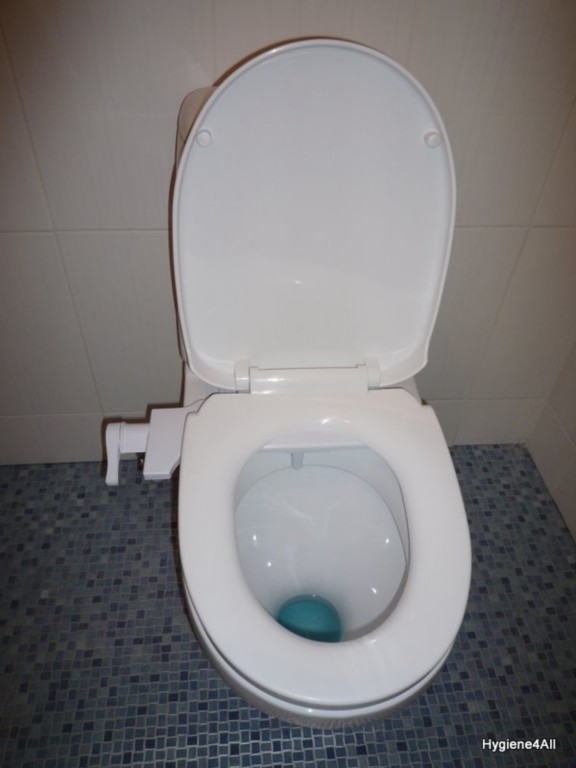A bidet is a low-mounted plumbing fixture or type of sink intended for washing the genitalia, inner buttocks, and anus. Originally a French word, in English bidet is pronounced /bɪˈdei/ (US) or /ˈbiːdeɪ/ (UK).
Bidet is a French word for pony (and in Old French, bider meant to trot). This etymology comes from the fact that one rides a bidet much like a pony is ridden.
The bidet appears to have been an invention of French furniture makers in the late 17th or early 18th century, although no exact date or inventor is known. Theories exist that its inventor is Christophe des Rosiers, furniture maker for the French Royal Family, but Marc-Antoine Jacoud is also rumored to have been the inventor. The earliest written reference to the bidet is in 1710. By 1900, due to plumbing improvements, the bidet (and chamber pot) moved from the bedroom to the bathroom. 1960 saw the introduction of the electronic bidet, an attachment which connects on to existing toilet arrangements — ideal for bathrooms lacking the space for a separate bidet and toilet.
Bidets are primarily used to wash and clean the genitalia, perineum, inner buttocks, and anus. They may also be used to clean any other part of the body; they are very convenient for cleaning the feet, for example. Despite appearing similar to a toilet, it would be more accurate to compare it to the washbasin or bathtub. In fact, the bidet is used by some for a baby bath. Bidets once served as a practical way for couples to prepare themselves before sex, as well as to rinse themselves afterwards.[1]






